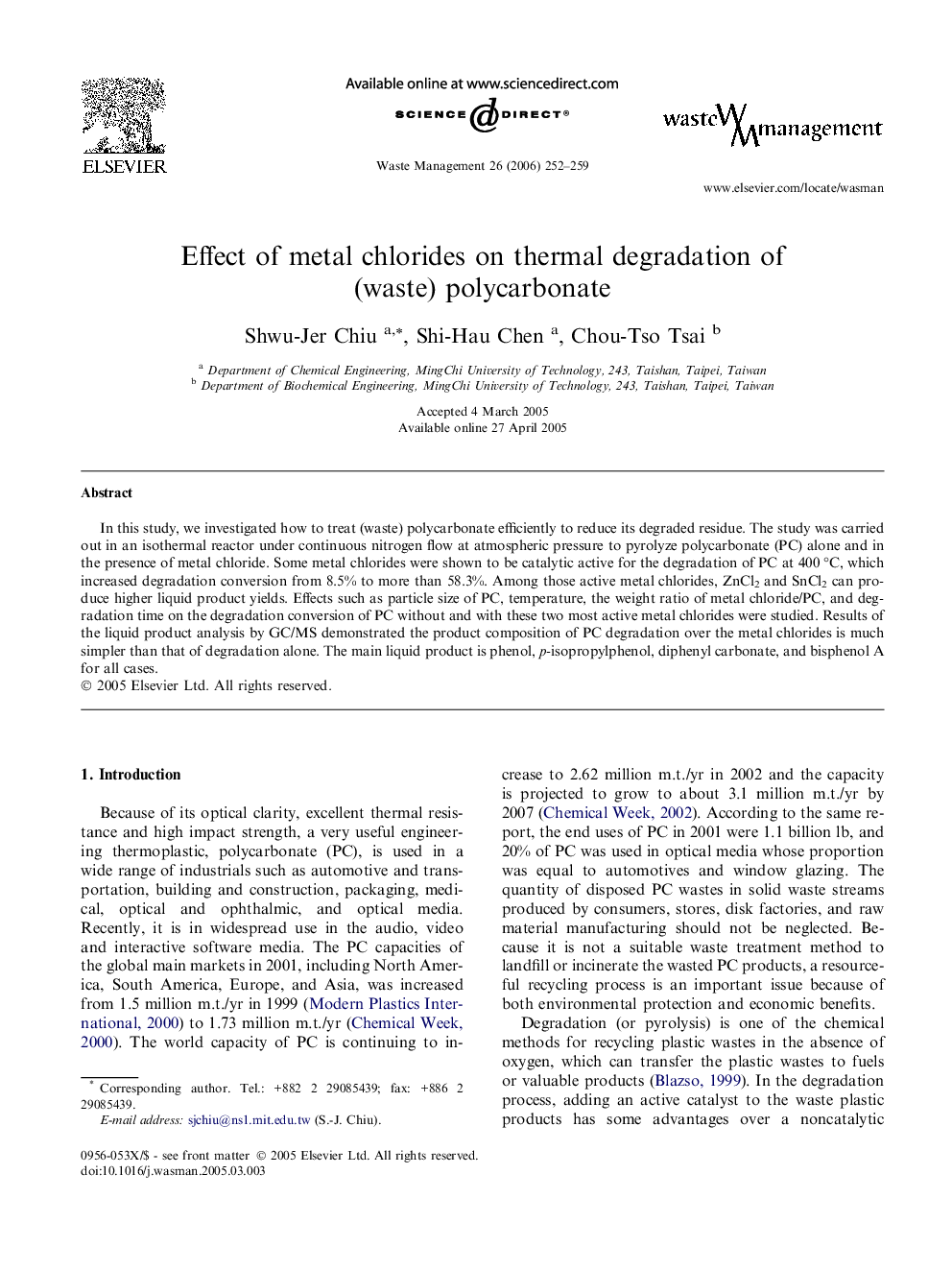| Article ID | Journal | Published Year | Pages | File Type |
|---|---|---|---|---|
| 4473939 | Waste Management | 2006 | 8 Pages |
In this study, we investigated how to treat (waste) polycarbonate efficiently to reduce its degraded residue. The study was carried out in an isothermal reactor under continuous nitrogen flow at atmospheric pressure to pyrolyze polycarbonate (PC) alone and in the presence of metal chloride. Some metal chlorides were shown to be catalytic active for the degradation of PC at 400 °C, which increased degradation conversion from 8.5% to more than 58.3%. Among those active metal chlorides, ZnCl2 and SnCl2 can produce higher liquid product yields. Effects such as particle size of PC, temperature, the weight ratio of metal chloride/PC, and degradation time on the degradation conversion of PC without and with these two most active metal chlorides were studied. Results of the liquid product analysis by GC/MS demonstrated the product composition of PC degradation over the metal chlorides is much simpler than that of degradation alone. The main liquid product is phenol, p-isopropylphenol, diphenyl carbonate, and bisphenol A for all cases.
